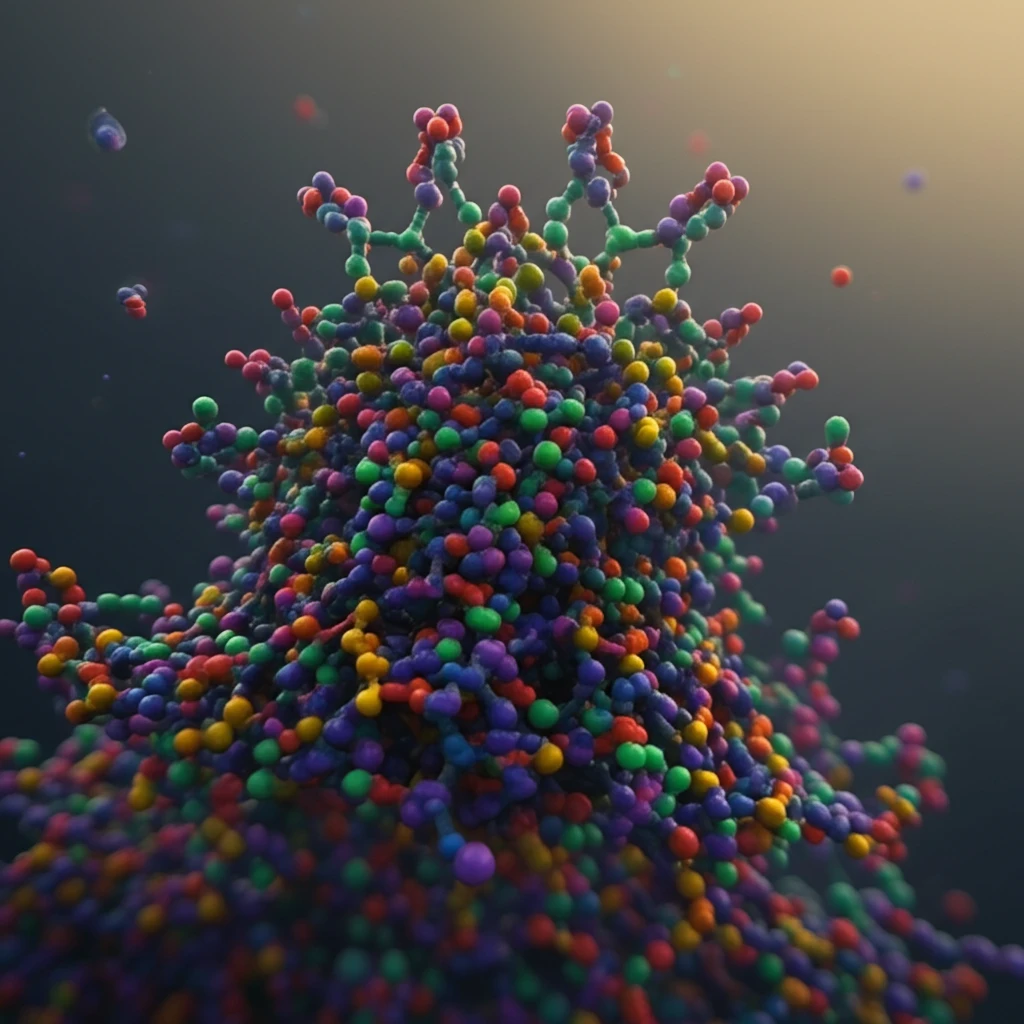
Unlock the Secrets of Molecular Assembly: How Chirality Shapes Our World
"Delve into the fascinating world of chiral supramolecular networks and their implications for advanced materials and pharmaceuticals."
Chirality, a fundamental concept in biology and chemistry, plays a pivotal role in many natural processes and industrial applications. From drug development to the creation of advanced materials, the ability to control and manipulate chiral structures is increasingly important. But what exactly is chirality, and why does it matter? Simply put, chirality refers to molecules that are non-superimposable mirror images of each other, much like our left and right hands. This seemingly small difference can have enormous consequences, influencing everything from the effectiveness of a drug to the properties of a new material.
Recent advances in supramolecular chemistry have opened new avenues for exploring and exploiting chirality. Scientists are now able to create complex, self-assembling structures where chirality is transferred from individual molecules to larger, mesoscopic systems. This hierarchical chirality transfer, as it's known, holds immense potential for designing materials with tailored properties and for developing more efficient chemical processes. However, the underlying mechanisms that drive these chiral assemblies are still not fully understood. Researchers are working diligently to unravel the intricacies of molecular recognition and self-assembly, aiming to harness the power of chirality for a wide range of applications.
The ability to directly observe and manipulate these molecular interactions is critical for advancing this field. Cutting-edge techniques, such as scanning probe microscopy (SPM), are providing unprecedented insights into the dynamics of chiral self-assembly, allowing scientists to visualize the step-by-step processes that govern the formation of complex structures. This real-time observation is essential for refining our understanding of chirality transfer and for designing new molecular units with programmed functionalities.
Unveiling the Secrets of DBBA Assembly on Copper Surfaces

A recent study published in Physical Chemistry Chemical Physics sheds light on the intricate process of chiral supramolecular network formation using 10,10′-dibromo-9,9′-bianthryl (DBBA) molecules on a copper (Cu(111)) surface. The research team combined high-resolution noncontact atomic force microscopy (nc-AFM) and high-speed scanning tunneling microscopy (STM) to observe the self-assembly process in real-time. This combined approach allowed them to visualize not only the static structures but also the dynamic interactions that drive the formation of these chiral networks.
- Real-time observation of hierarchical chirality transfer.
- Identification of distinct assembly mechanisms at the molecular level.
- Quantification of the enantioselectivity of interchain coupling.
Implications and Future Directions
This research provides valuable insights into the fundamental mechanisms that govern chiral self-assembly. By directly observing the molecular interactions and quantifying the enantioselectivity of the process, the researchers have paved the way for designing new molecular systems with tailored chiral properties. These findings have significant implications for various fields, including pharmaceuticals, where the precise control of chirality is crucial for drug efficacy, and materials science, where chiral structures can lead to novel optical and electronic properties. Further research in this area will undoubtedly lead to the development of new technologies and applications that harness the power of chirality at the nanoscale.
